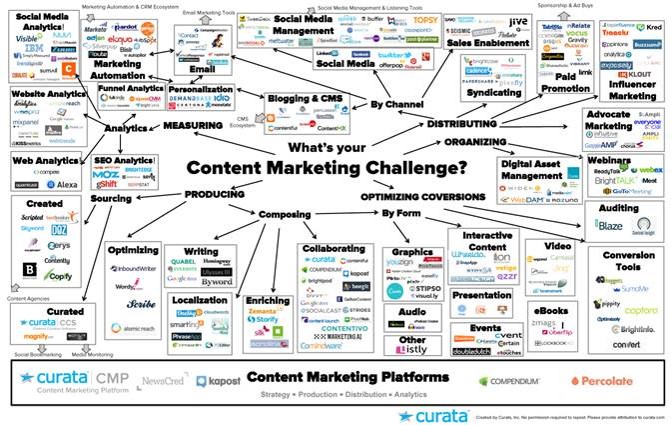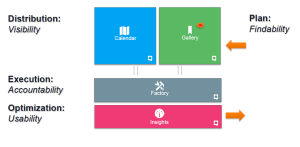Marketing content, from thought leadership white papers to video and sales collateral, is the fuel that drives B2B marketing. Relevant content must influence customers across the acquisition and retention spectrums. Yet leading B2B marketing research firm SiriusDecisions estimates that 66% of B2B content assets are either under-utilized or not deployed at all in the geographically-distributed, matrix enterprises that are the norm in today’s business world.
This means, for example, that if $1 million is invested in content creation, then $660,000 is wasted as the assets either cannot be found or are irrelevant as they do not meet customer needs and/or are unusable because they are either inaccurate or obsolete. Smart B2B marketers are recognizing that this structural problem must be addressed. SiriusDecisions challenges marketers to truly understand the external and internal costs of content creation. The outcome can confidently be predicted to be what Sirius describes as a BSN (Big Scary Number). Sirus says:
- The majority of B2B content creation is done internally across functions, representing a huge blind spot in the marketing budget
- Most B2B organizations have a hunch they’re wasting money on content creation, but have no ability to capture the total spend − never mind analyze waste
- It’s impossible to even begin to think about return on investment without having a good handle on what the investment truly is
In the face of these realities we must commit to making systematic the production, distribution and analysis of marketing content, whilst increasing productivity, delivering measurable results and reducing organizational friction. This means changing the way we commission, produce, manage, deploy and maintain content. An integrated, efficient content operation enabling effective, transparent and accountable marketing is essential.

It makes good business sense to invest into a dedicated B2B content engine application featuring content galleries and a centralised marketing calendar, which enables marketers to map content to customer personas and buying stages and develop workflow templates to accelerate content production. Content galleries and calendars when embedded in an integrated sales-and-marketing front-end environment (CRM + marketing automation and web content management) enhance relevancy, drive utilization and influence revenue.
Marketers have long needed a genuine strategic platform designed to target each content asset for a specific buyer persona at a specific stage in the buyer’s journey. It makes a profound difference, in an accountability and transparency context, if a content object is visible to all collaborators via a content dashboard and becomes part of our workflow in a calendar format, identifying due dates for content assets and campaigns.

The ability to distribute content to all channels with a click of a button is both a time saver and an amplifier. For example, sales people, with sales collateral galleries embedded in CRM, are able to easily post to their Linkedin connections our approved content. A sophisticated content engine aggregates performance metrics and displays them in one place, including links earned and conversions. Website, marketing automation and CRM integration, means you can score content performance based on its sales funnel impact. Critically, a content marketing platform must answer the pivotal content questions:
- It is relevant?
- Is being utilised by sales and marketing?
- Is it effective? Is it resonating with customers and influencing revenue generation & retention?
These foundation revenue metrics are our ultimate engagement indicators. Genuine creativity will always be an essential ingredient in the marketing mix, but we need to measure and understand if it is driving revenue or not. If not, what do we change? What do we do more of? The performance data will give us the confidence to experiment and fail more often and get better faster.